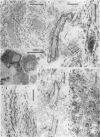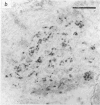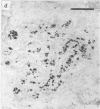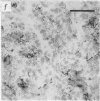Abstract
1. The distribution of acetyl- and butyrylcholinesterase in the carotid body of the cat has been examined histochemically. Studies were made on normal carotid bodies and on carotid bodies from cats in which certain nerves had been cut some time previously. The nerves sectioned were the sinus nerve, the post-ganglionic sympathetic branch of the superior cervical ganglion or the preganglionic cervical sympathetic trunk.
2. It was confirmed that more butyrylcholinesterase than acetylcholinesterase is present. Both enzymes are found in three sites: (i) as strands, (ii) as plexuses, (iii) inside a few cells.
3. The distribution is unaffected by cutting the sinus nerve or preganglionic cervical sympathetic nerves. Disorganization and depletion of the cholinesterases in the strands and plexuses occurs when the post-ganglionic branch of the superior cervical ganglion is cut. The cholinesterase in cells is unaffected.
4. In carotid bodies in which vessels were filled with red blood cells or in which the vascular bed was injected with carmine-gelatine, it was seen that strands and plexuses are associated with blood vessels, and with blood vessels and cells respectively.
5. It is suggested that a cholinergic pathway controlling carotid body blood vessels runs in the post-ganglionic cervical sympathetic.
Full text
PDF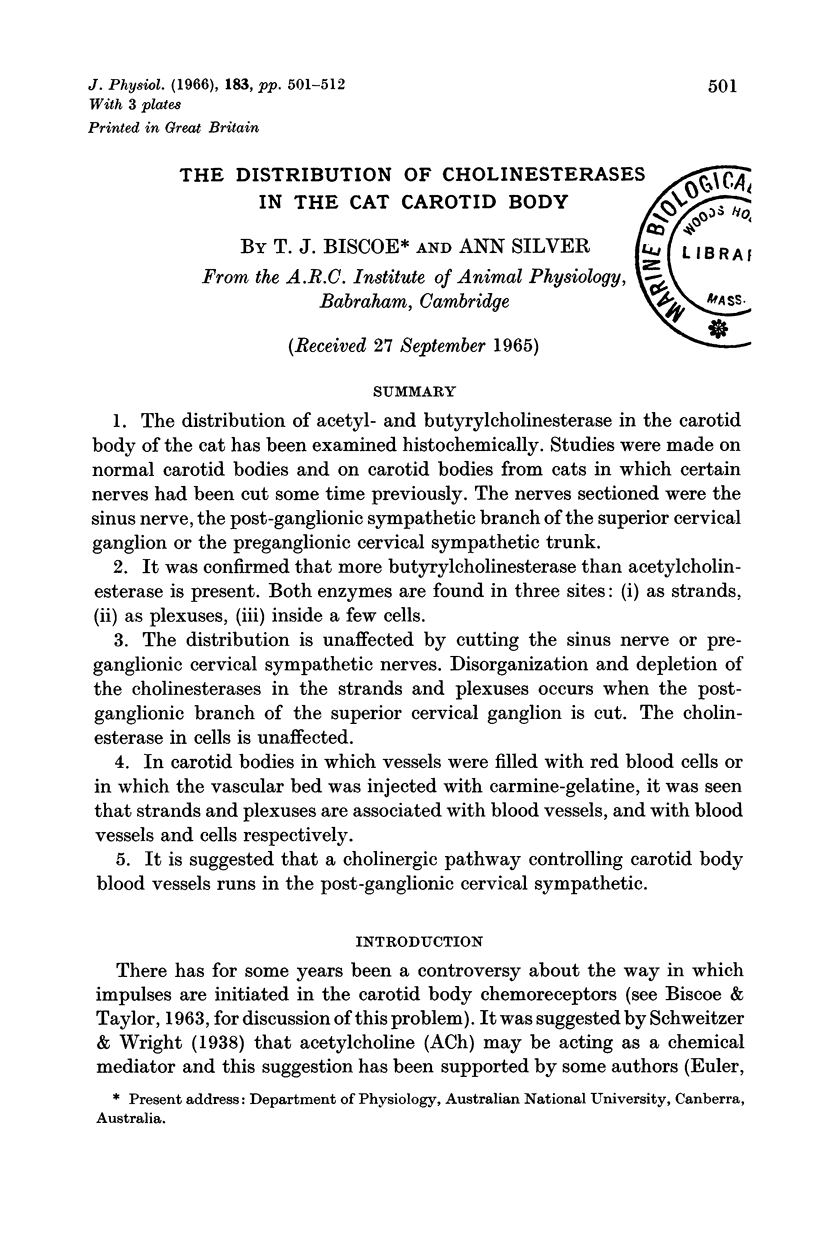
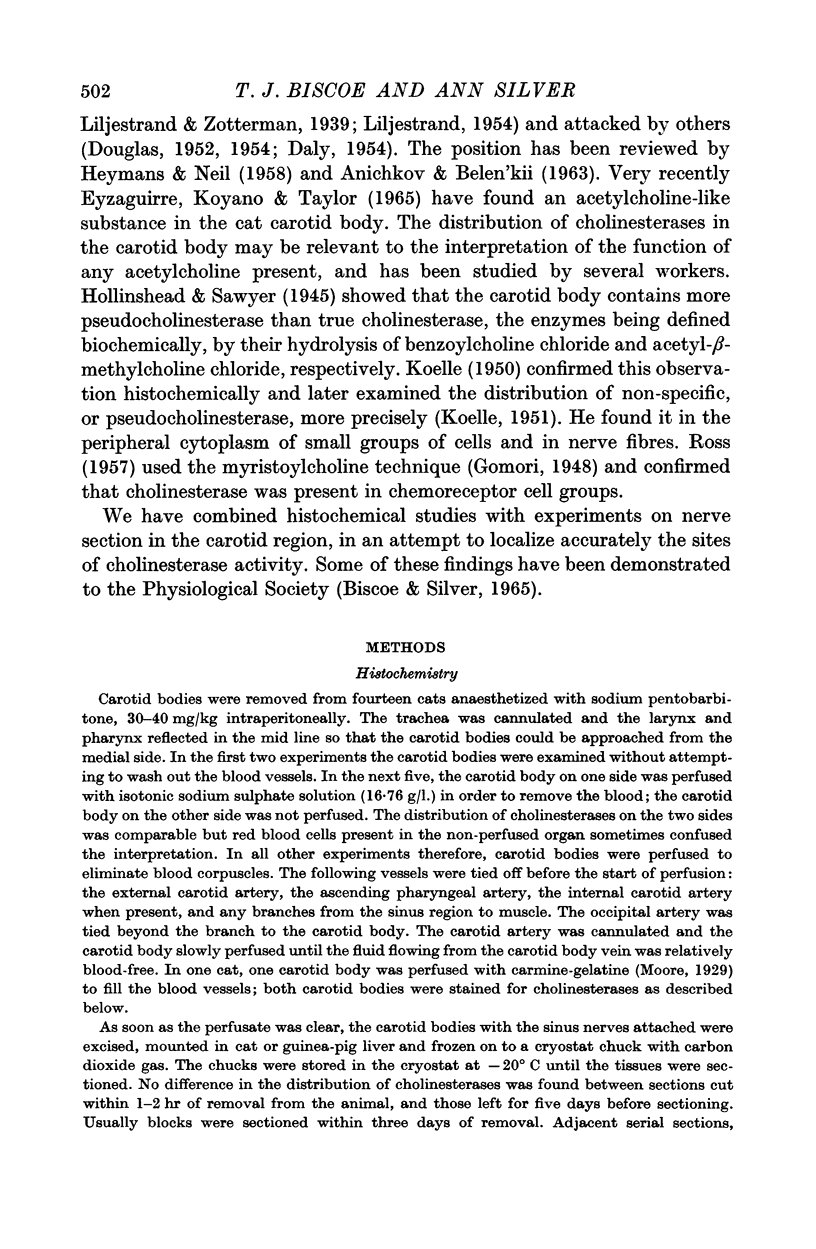
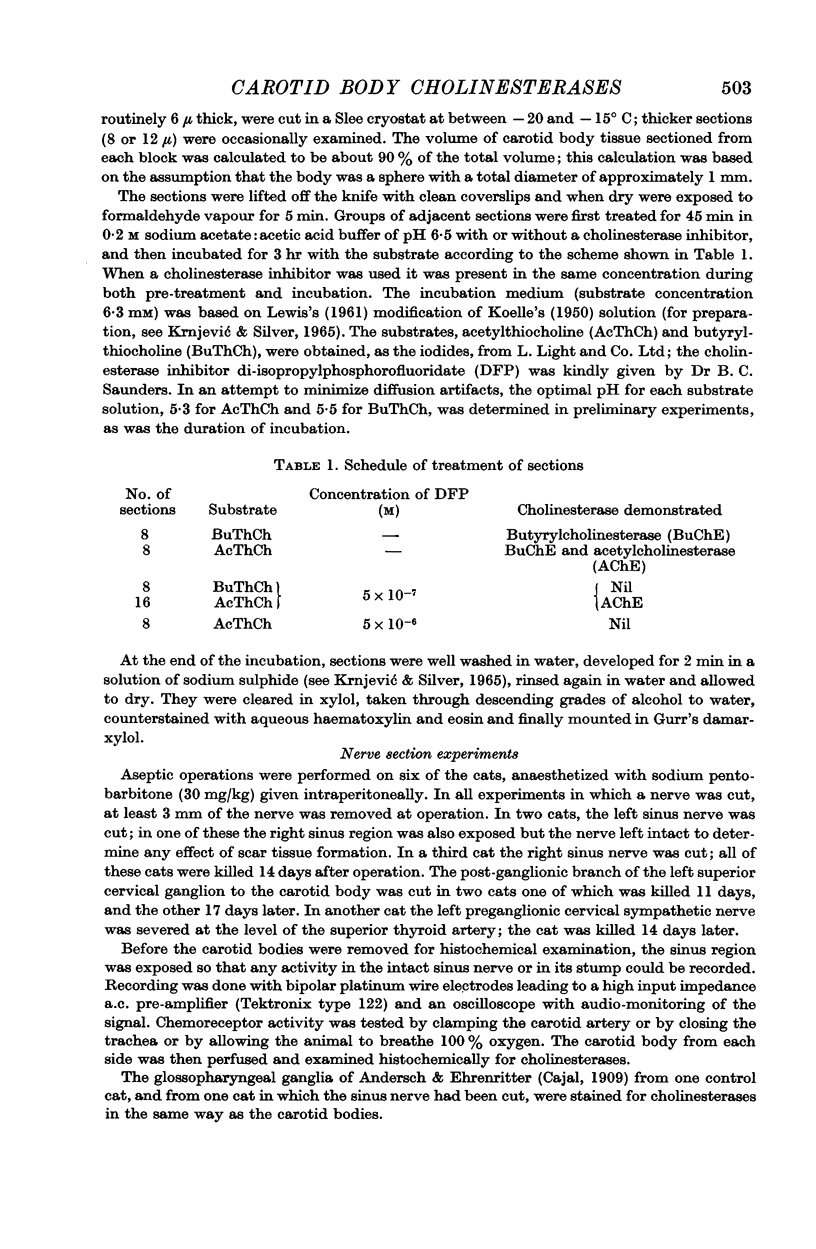
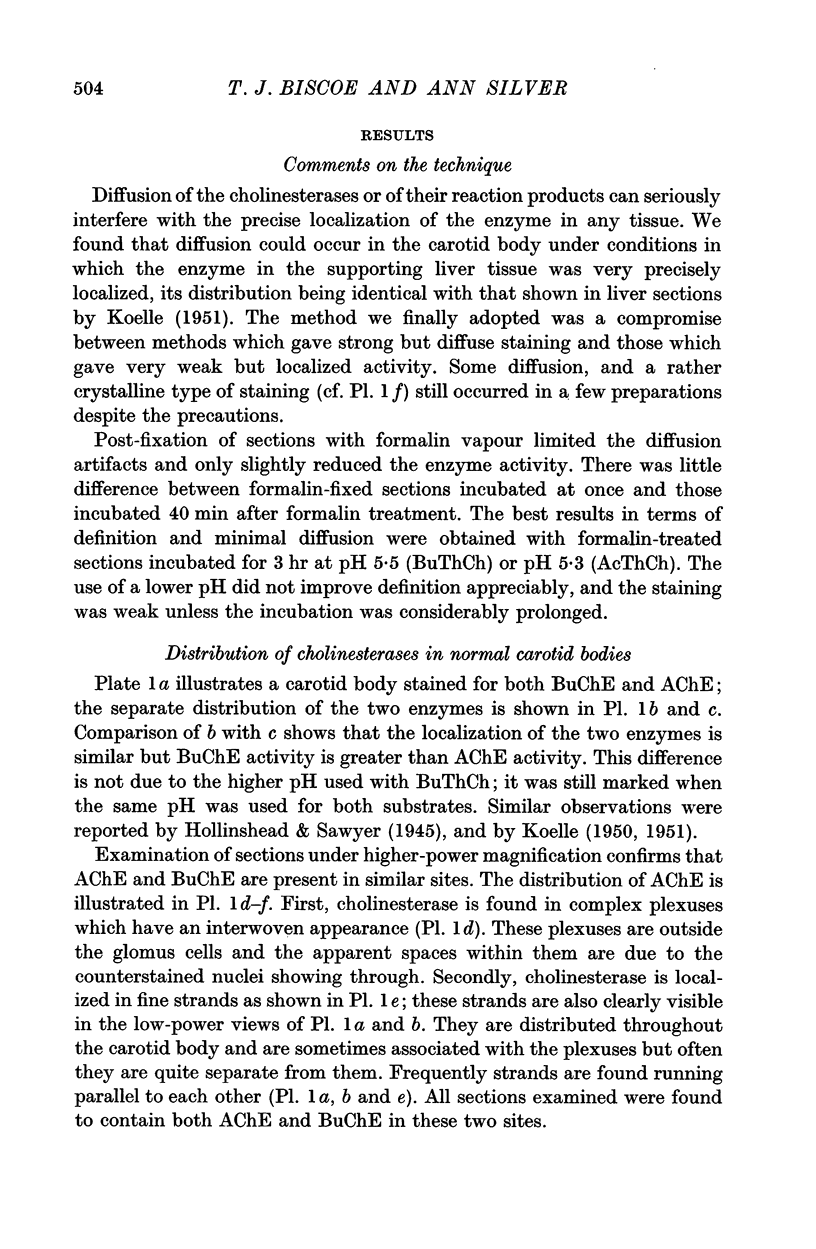
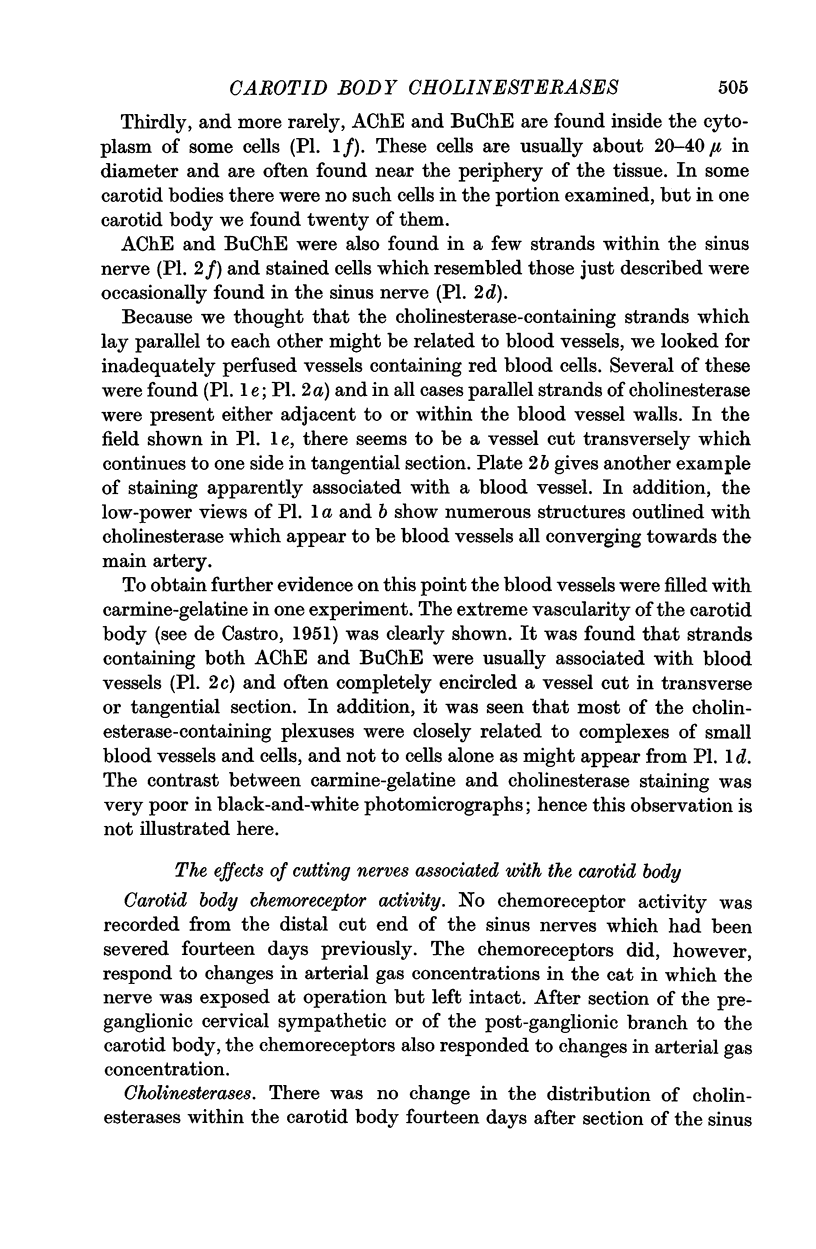
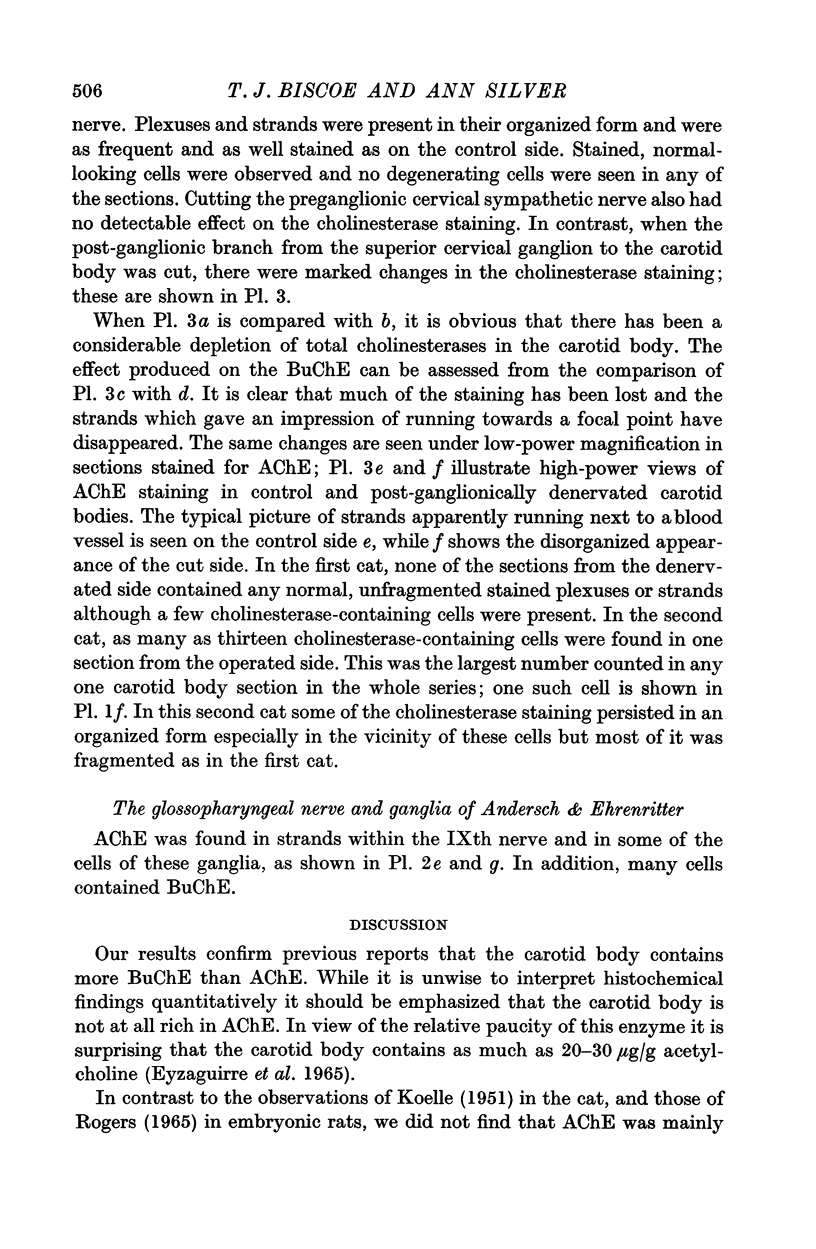
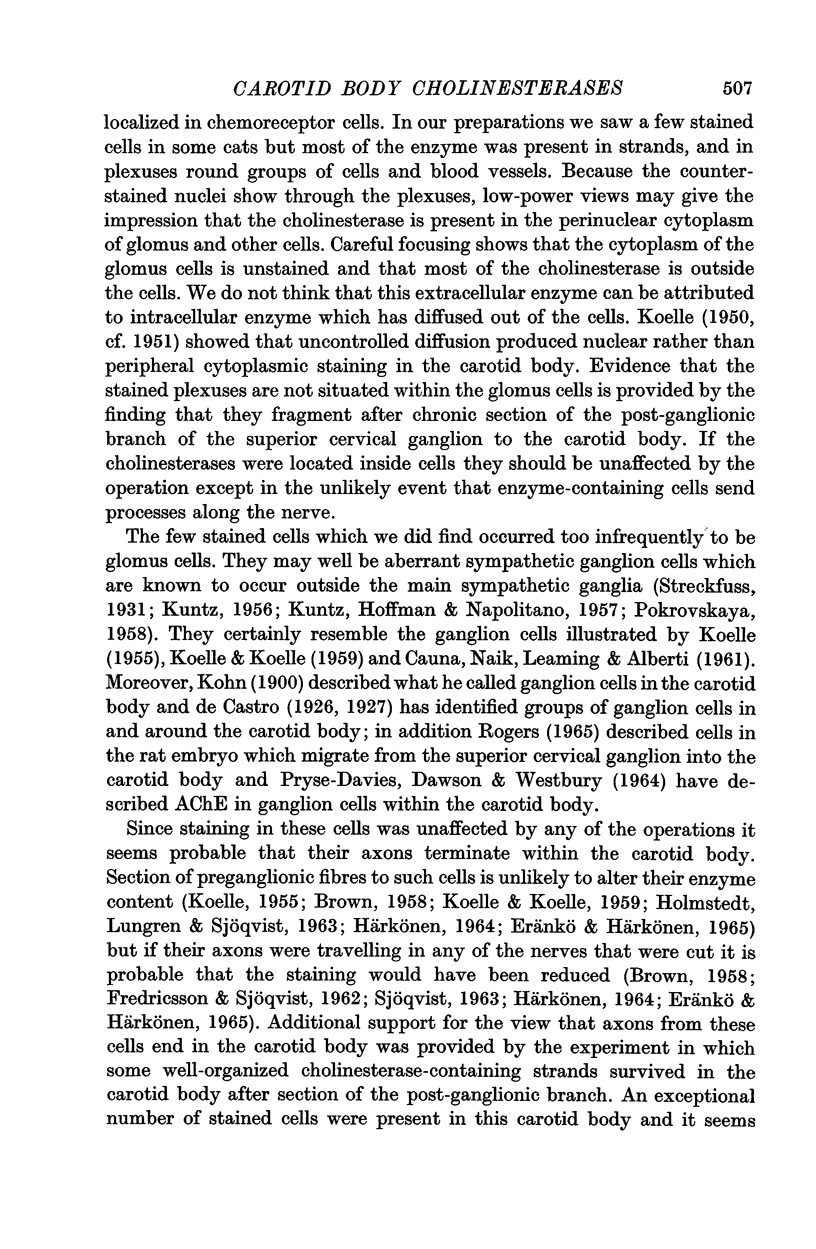
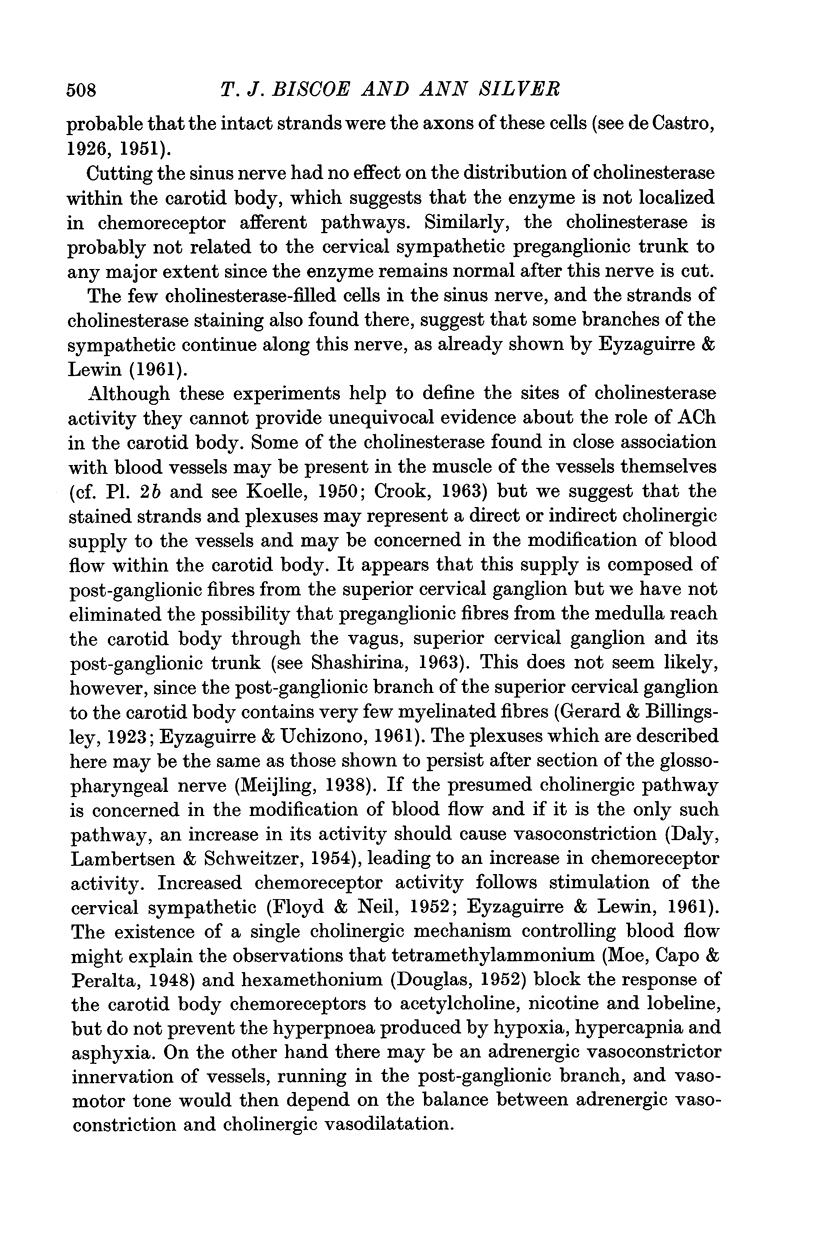
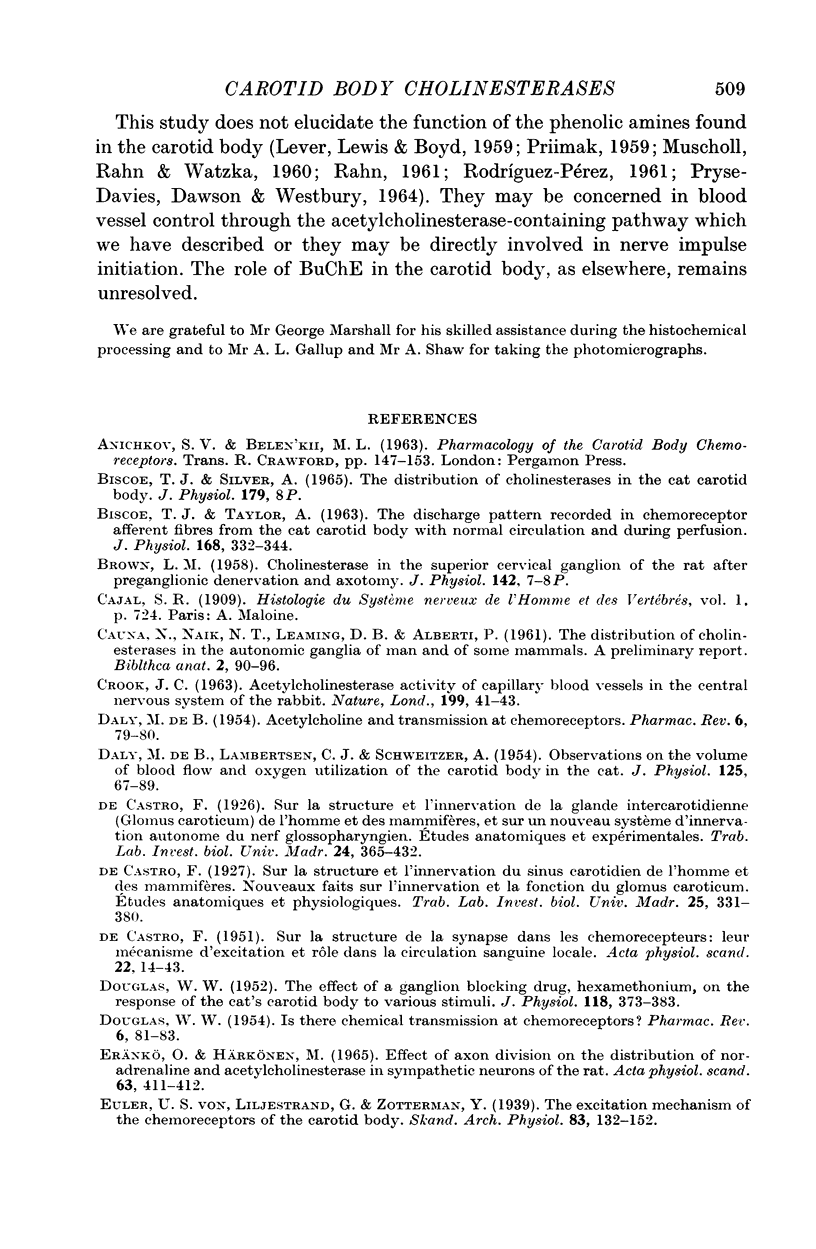
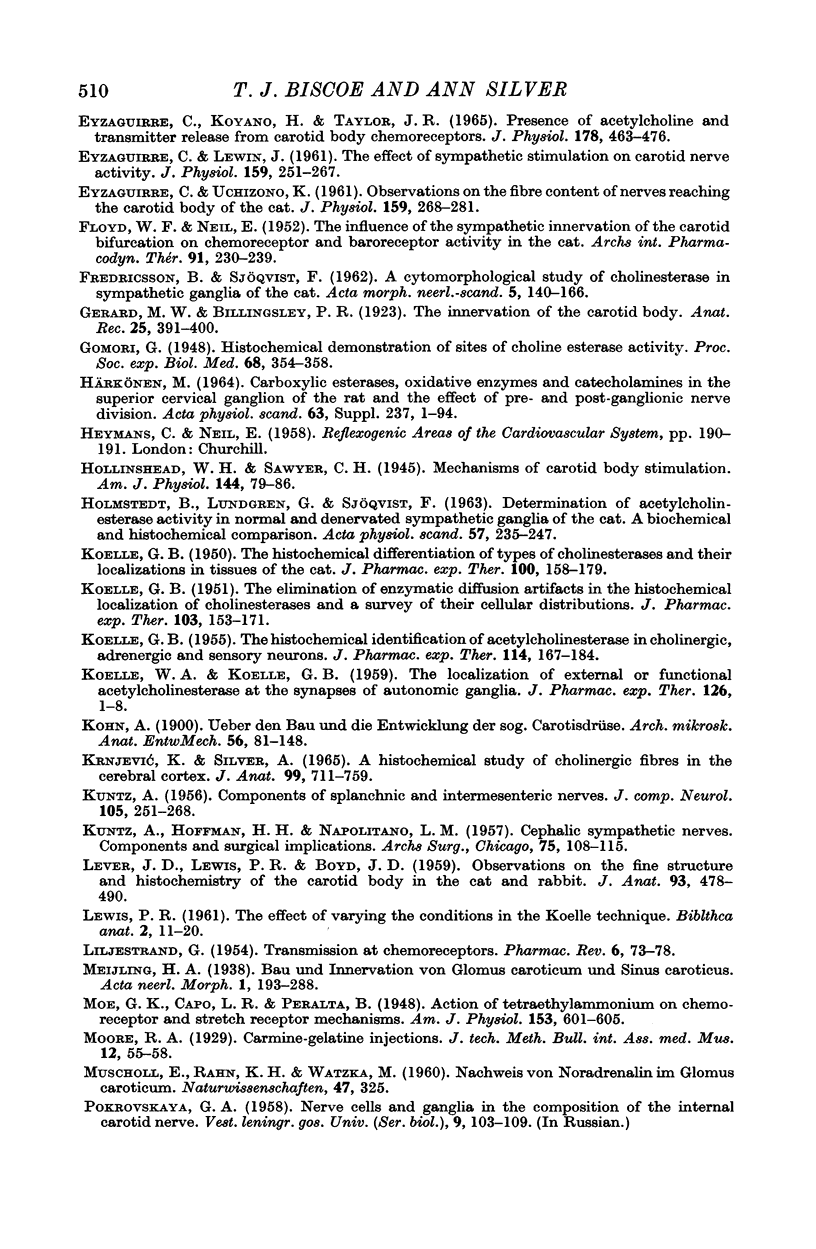
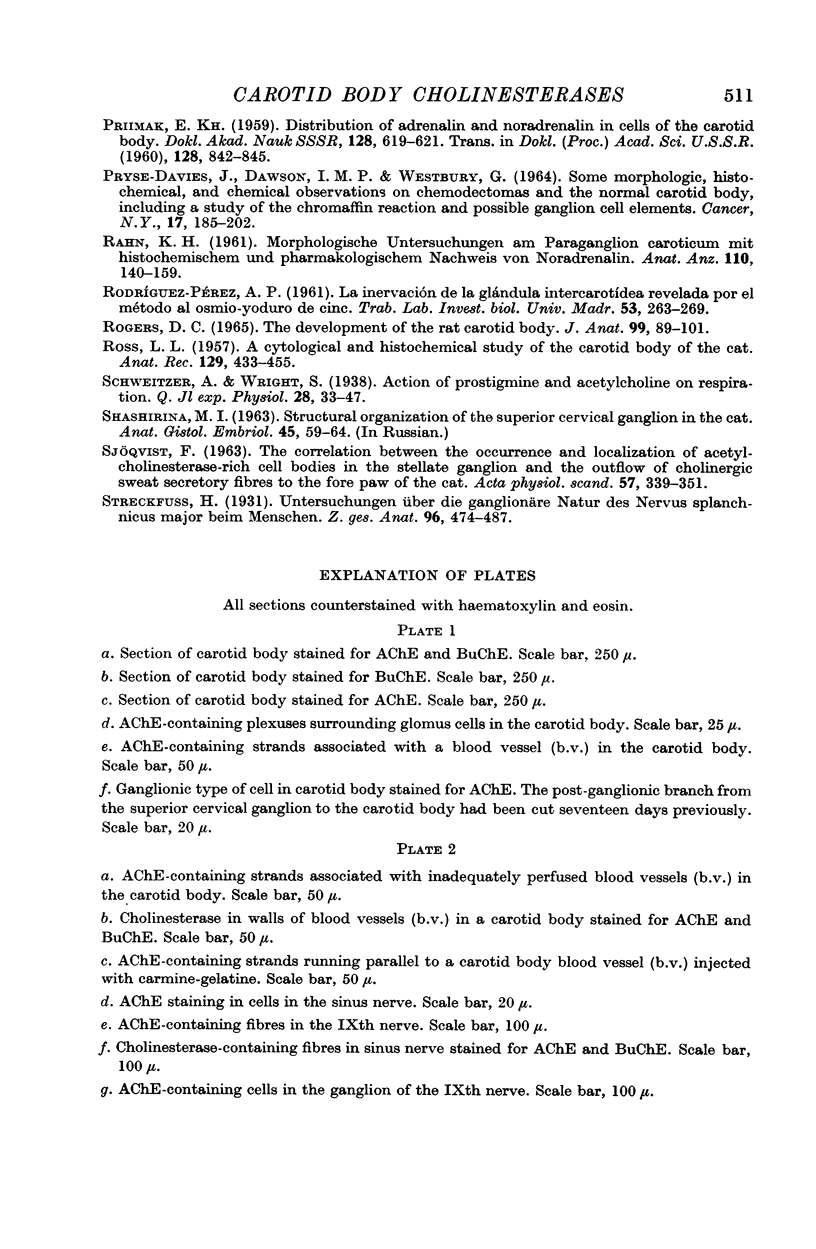
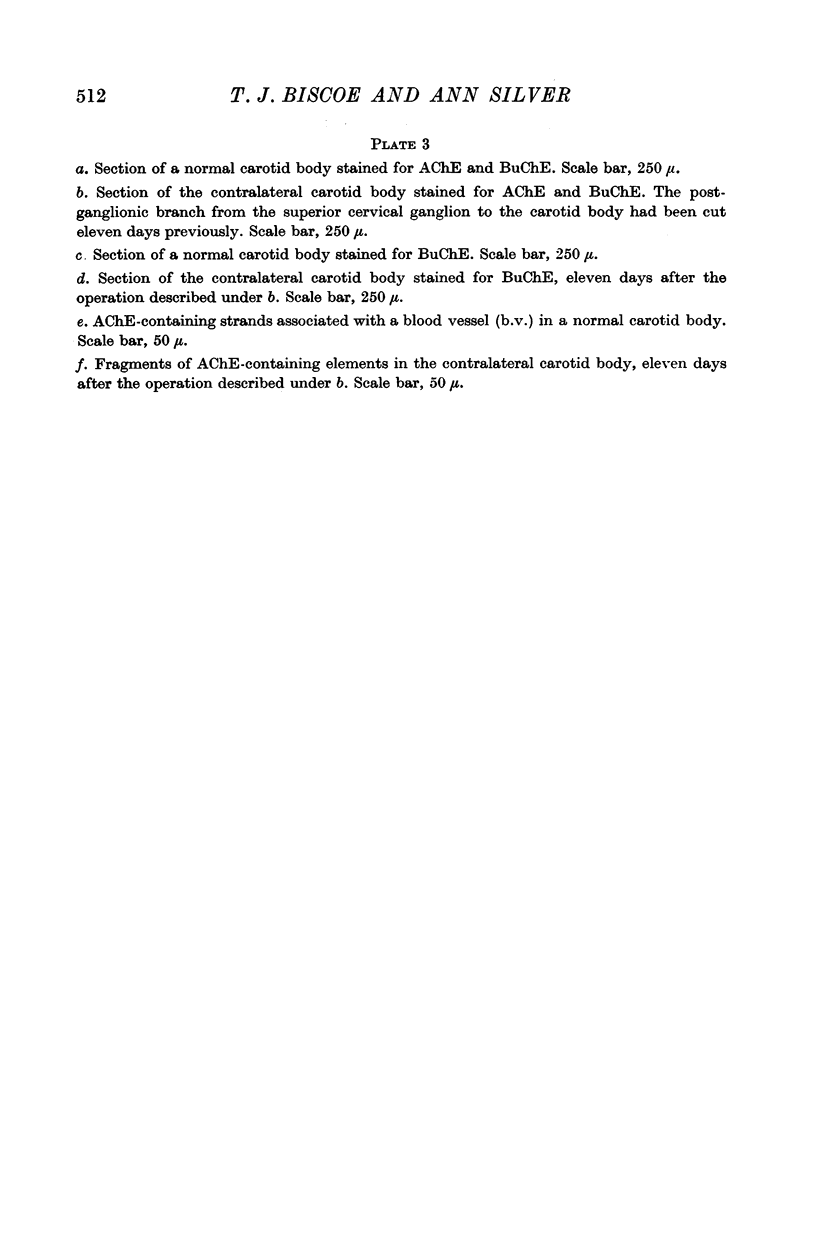
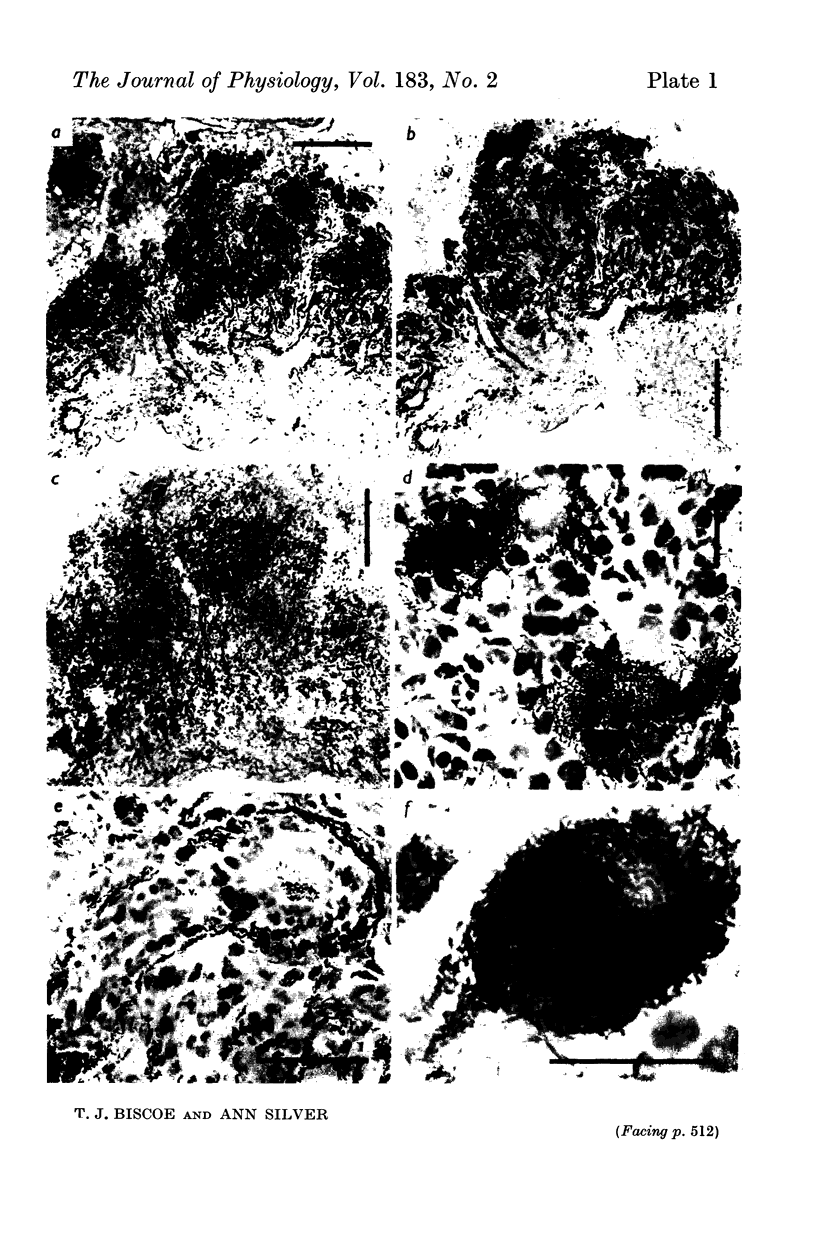
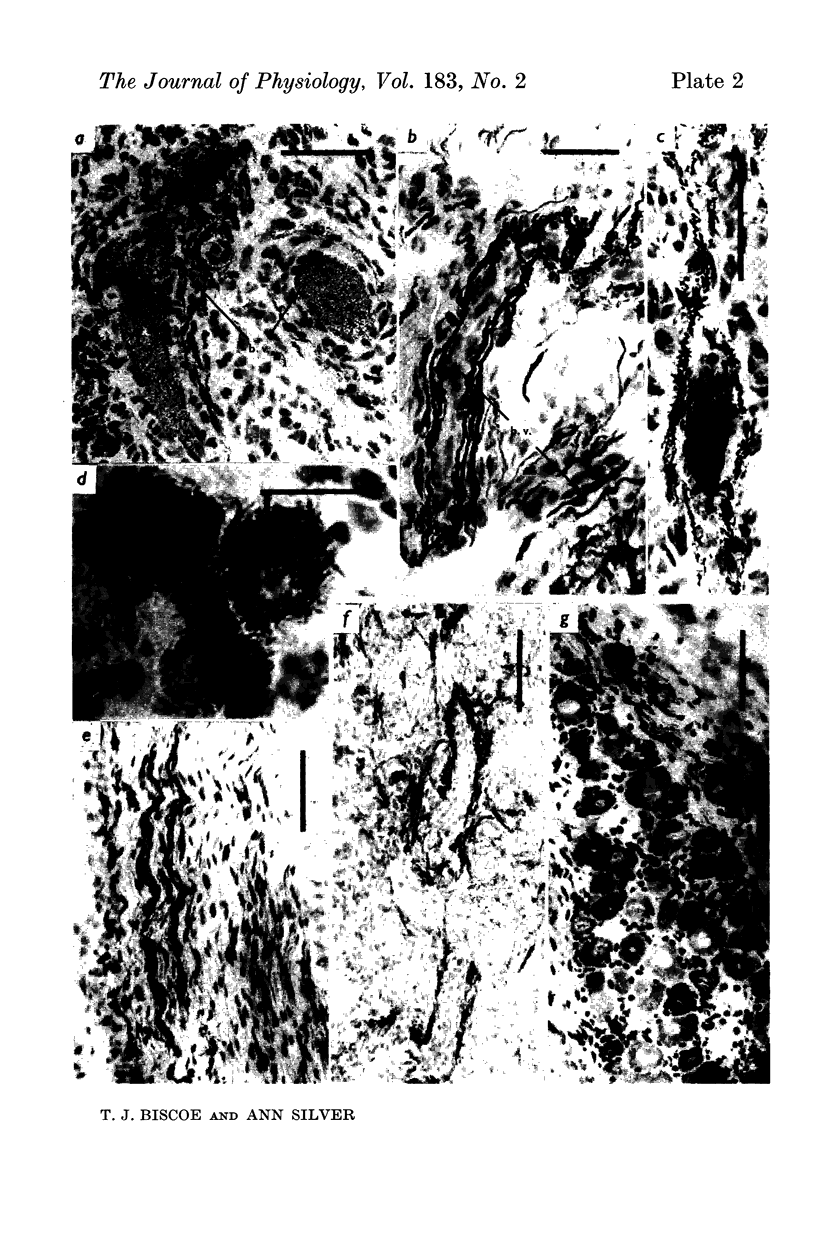
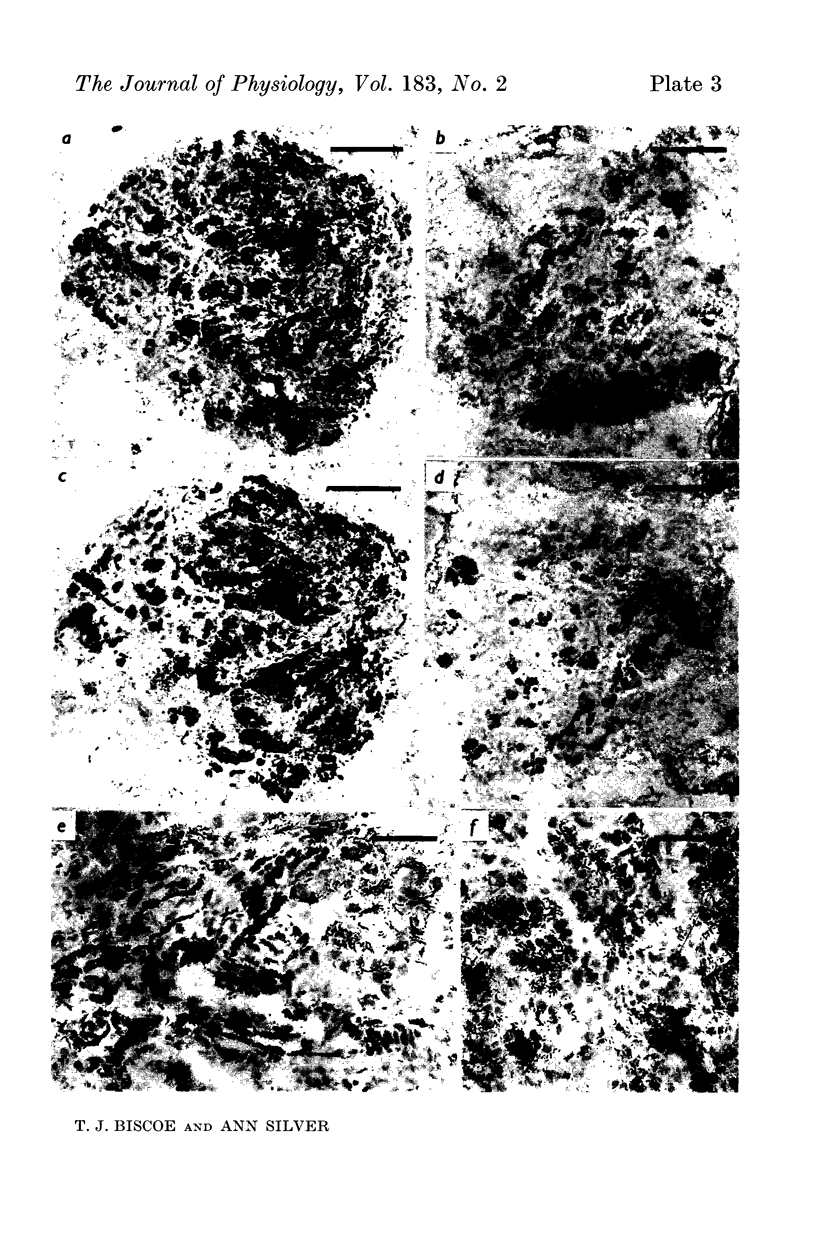
Images in this article
Selected References
These references are in PubMed. This may not be the complete list of references from this article.
- BISCOE T. J., TAYLOR A. THE DISCHARGE PATTERN RECORDED IN CHEMORECEPTOR AFFERENT FIBRES FROM THE CAT CAROTID BODY WITH NORMAL CIRCULATION AND DURING PERFUSION. J Physiol. 1963 Sep;168:332–344. doi: 10.1113/jphysiol.1963.sp007195. [DOI] [PMC free article] [PubMed] [Google Scholar]
- CROOK J. C. ACETYLCHOLINESTERASE ACTIVITY OF CAPILLARY BLOOD VESSELS IN THE CENTRAL NERVOUS SYSTEM OF THE RABBIT. Nature. 1963 Jul 6;199:41–43. doi: 10.1038/199041a0. [DOI] [PubMed] [Google Scholar]
- DE BURGH DALY M. Acetylcholine and transmission at chemoreceptors. Pharmacol Rev. 1954 Mar;6(1):79–80. [PubMed] [Google Scholar]
- DE BURGH DALY M., LAMBERTSEN C. J., SCHWEITZER A. Observations on the volume of blood flow and oxygen utilization of the carotid body in the cat. J Physiol. 1954 Jul 28;125(1):67–89. doi: 10.1113/jphysiol.1954.sp005143. [DOI] [PMC free article] [PubMed] [Google Scholar]
- DE CASTRO F. Sur la structure de la synapse dans les chemocepteurs; leur mécanisme d'excitation et rôle dans la circulation sanguine locale. Acta Physiol Scand. 1951 Feb 21;22(1):14–43. doi: 10.1111/j.1748-1716.1951.tb00747.x. [DOI] [PubMed] [Google Scholar]
- DOUGLAS W. W. Is there chemical transmission at chemoreceptors? Pharmacol Rev. 1954 Mar;6(1):81–83. [PubMed] [Google Scholar]
- DOUGLAS W. W. The effect of a ganglion-blocking drug, hexamethonium, on the response of the cat's carotid body to various stimuli. J Physiol. 1952 Nov;118(3):373–383. doi: 10.1113/jphysiol.1952.sp004801. [DOI] [PMC free article] [PubMed] [Google Scholar]
- EYZAGUIRRE C., LEWIN J. The effect of sympathetic stimulation on carotid nerve activity. J Physiol. 1961 Dec;159:251–267. doi: 10.1113/jphysiol.1961.sp006806. [DOI] [PMC free article] [PubMed] [Google Scholar]
- EYZAGUIRRE C., UCHIZONO K. Observations on the fibre content of nerves reaching the carotid body of the cat. J Physiol. 1961 Dec;159:268–281. doi: 10.1113/jphysiol.1961.sp006807. [DOI] [PMC free article] [PubMed] [Google Scholar]
- Eyzaguirre C., Koyano H., Taylor J. R. Presence of acetylcholine and transmitter release from carotid body chemoreceptors. J Physiol. 1965 Jun;178(3):463–476. doi: 10.1113/jphysiol.1965.sp007637. [DOI] [PMC free article] [PubMed] [Google Scholar]
- FLOYD W. F., NEIL E. The influence of the sympathetic innervation of the carotid bifurcation on chemoceptor and baroceptor activity in the cat. Arch Int Pharmacodyn Ther. 1952 Sep 1;91(1-2):230–239. [PubMed] [Google Scholar]
- FREDRICSSON B., SJOQVIST F. A cytomorphological study of cholinesterase in sympathetic ganglia of the cat. Acta Morphol Neerl Scand. 1962;5:140–166. [PubMed] [Google Scholar]
- HOLMSTEDT B., LUNDGREN G., SJOQVIST F. Determination of acetylcholinesterase activity in normal and denervated sympathetic ganglia of the cat. A biochemical and histochemical comparison. Acta Physiol Scand. 1963 Mar;57:235–247. doi: 10.1111/j.1748-1716.1963.tb02589.x. [DOI] [PubMed] [Google Scholar]
- KOELLE G. B. The elimination of enzymatic diffusion artifacts in the histochemical localization of cholinesterases and a survey of their cellular distributions. J Pharmacol Exp Ther. 1951 Oct;103(2):153–171. [PubMed] [Google Scholar]
- KOELLE G. B. The histochemical differentiation of types of cholinesterases and their localizations in tissues of the cat. J Pharmacol Exp Ther. 1950 Oct;100(2):158–179. [PubMed] [Google Scholar]
- KOELLE G. B. The histochemical identification of acetylcholinesterase in cholinergic, adrenergic and sensory neurons. J Pharmacol Exp Ther. 1955 Jun;114(2):167–184. [PubMed] [Google Scholar]
- KOELLE W. A., KOELLE G. B. The localization of external or functional acetylcholinesterase at the synapses of autonomic ganglia. J Pharmacol Exp Ther. 1959 May;126(1):1–8. [PubMed] [Google Scholar]
- KUNTZ A. Components of splanchnic and intermesenteric nerves. J Comp Neurol. 1956 Sep;105(2):251–268. doi: 10.1002/cne.901050205. [DOI] [PubMed] [Google Scholar]
- KUNTZ A., HOFFMAN H. H., NAPOLITANO L. M. Cephalic sympathetic nerves; components and surgical implications. AMA Arch Surg. 1957 Jul;75(1):108–115. doi: 10.1001/archsurg.1957.01280130112019. [DOI] [PubMed] [Google Scholar]
- Krnjević K., Silver A. A histochemical study of cholinergic fibres in the cerebral cortex. J Anat. 1965 Oct;99(Pt 4):711–759. [PMC free article] [PubMed] [Google Scholar]
- LEVER J. D., LEWIS P. R., BOYD J. D. Observations on the fine structure and histochemistry of the carotid body in the cat and rabbit. J Anat. 1959 Oct;93:478–490. [PMC free article] [PubMed] [Google Scholar]
- LILJESTRAND G. Transmission at chemoreceptors. Pharmacol Rev. 1954 Mar;6(1):73–78. [PubMed] [Google Scholar]
- PRYSE-DAVIES J., DAWSON I. M. SOME MORPHOLOGIC, HISTOCHEMICAL, AND CHEMICAL OBSERVATIONS ON CHEMODECTOMAS AND THE NORMAL CAROTID BODY, INCLUDING A STUDY OF THE CHROMAFFIN REACTION AND POSSIBLE GANGLION CELL ELEMENTS. Cancer. 1964 Feb;17:185–202. doi: 10.1002/1097-0142(196402)17:2<185::aid-cncr2820170208>3.0.co;2-1. [DOI] [PubMed] [Google Scholar]
- RAHN K. H. [Morphological studies on the carotid paraganglion with histochemical and pharmacological demonstration of noradrenalin]. Anat Anz. 1961 Nov 30;110:140–159. [PubMed] [Google Scholar]
- ROGERS D. C. THE DEVELOPMENT OF THE RAT CAROTID BODY. J Anat. 1965 Jan;99:89–101. [PMC free article] [PubMed] [Google Scholar]
- ROSS L. L. A cytological and histochemical study of the carotid body of the cat. Anat Rec. 1957 Dec;129(4):433–455. doi: 10.1002/ar.1091290407. [DOI] [PubMed] [Google Scholar]
- SHASHIRINA M. I. O STRUKTURNO I ORGANIZATSII VERKHNEGO SHE INOGO SIMPATICHESKOGO UZLA KOSHKI. Arkh Anat Gistol Embriol. 1963 Sep;45:59–64. [PubMed] [Google Scholar]









